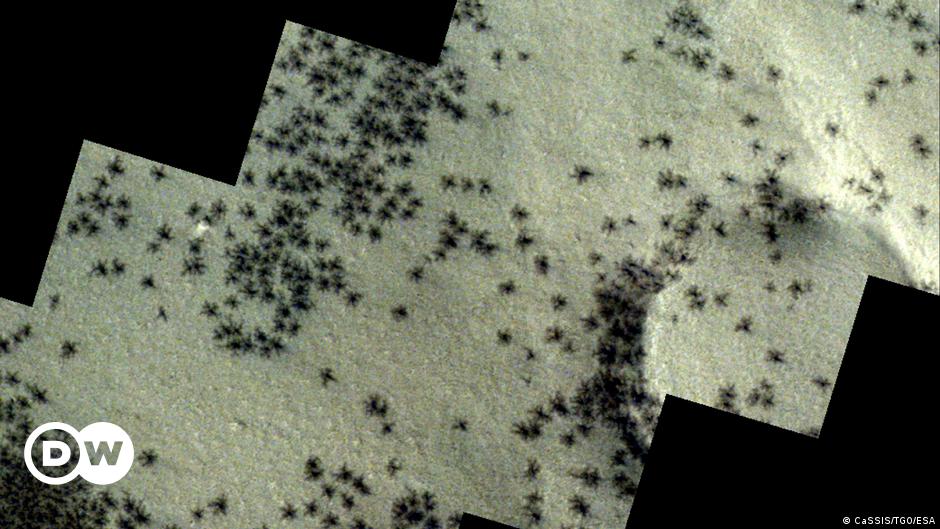Although he might think so at first glance Mars If you are surrounded by spiders, there is really no reason to worry, especially if you are afraid of them. What the new image of Martian 'spiders', taken by the Mars Express probe and the ExoMars Trace Gas Orbiter, shows European Space Agency (ESA), They are actually seasonal explosions of carbon dioxide on the Red Planet.
These strange formations Found in an area called the “Inca City”. The south polar region of Mars, They are the product of ice that, as Martian winter changes to spring, releases gas-forming channels ranging from 45 meters to 1 kilometer in diameter.
“These tiny dark features form when spring sunlight falls on layers of carbon dioxide deposited during the dark winter months.” ESA details. “Sunlight turns the carbon dioxide ice at the base of the layer into a gas, causing it to accumulate and break up the upper ice sheets. The gas is released in the Martian spring, pulling dark material towards the surface and breaking up the layers of ice,” they add, “up to a meter thick.”
This phenomenon leads to the emergence of gases laden with dark dust, which are released in high columns through cracks in the ice, forming hot springs that then fall and settle on the surface, leading to the appearance of noticeable dark spots. This same process is what forms the distinctive spider-shaped patterns under the ice, telltale signs of these strange formations.
Inca city on Mars
The Inca city, discovered by NASA's Mariner 9 probe in 1972 and also known as the Angustus Labyrinth, owes its name to its linear mountain ranges, which were initially thought to be fossilized sand dunes or the remains of ancient Martian glaciers. However, according to reports Live sciencesDiscoveries made in 2002 from the Mars Orbiter indicated that it was actually part of a circular crater about 86 km wide, and may have been an ancient impact crater. Geometric ridges could be seeps of magma created after the impact of a space rock.
A classic example of pareidolia
Our minds often trick us into seeing things that are not there, a phenomenon known as pareidolia. Detecting familiar patterns quickly can have evolutionary value in identifying potential dangers, such as a snake, which is why we sometimes see things where they don't exist, such as Martian “spiders.”
On Mars, We have seen many pareidolia, e.g The famous “bear face”, or even “foreign door” Captured by Curiosity, as well as a rock-shaped… Cat of perseverance. For its part, the Chinese spacecraft Yutu 2 found the moon “Mystery cabin” Which turned out to be a strange shaped rock. What else will we see in the vast and mysterious Martian landscape?
Felipe Espinosa Wang with information from ESA and Live Science.


:quality(85)/cloudfront-us-east-1.images.arcpublishing.com/infobae/JI7PZZNCYJCRNJ52OG723XUWXY.jpg)


